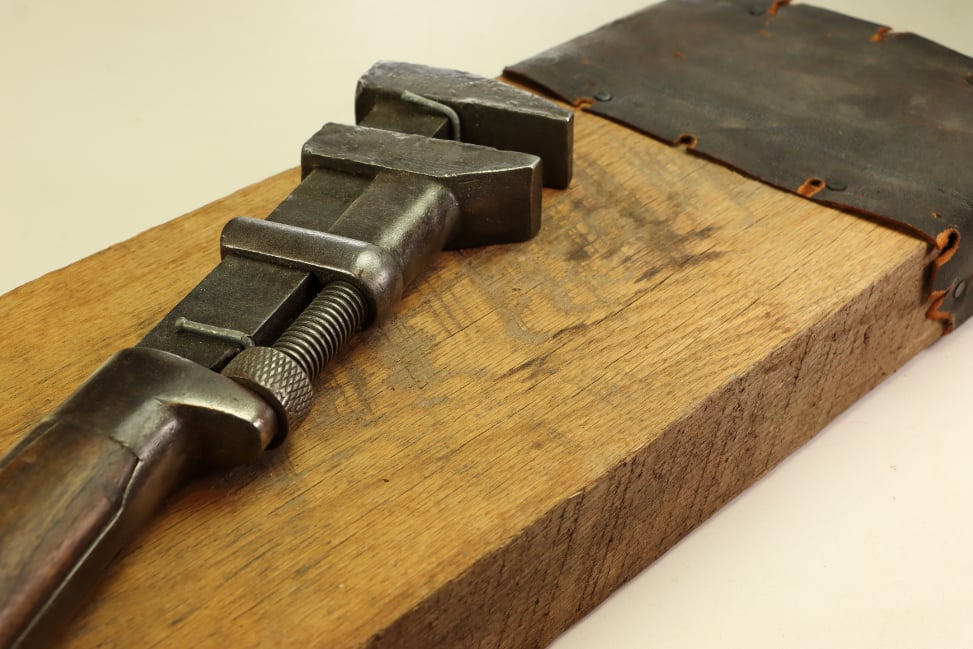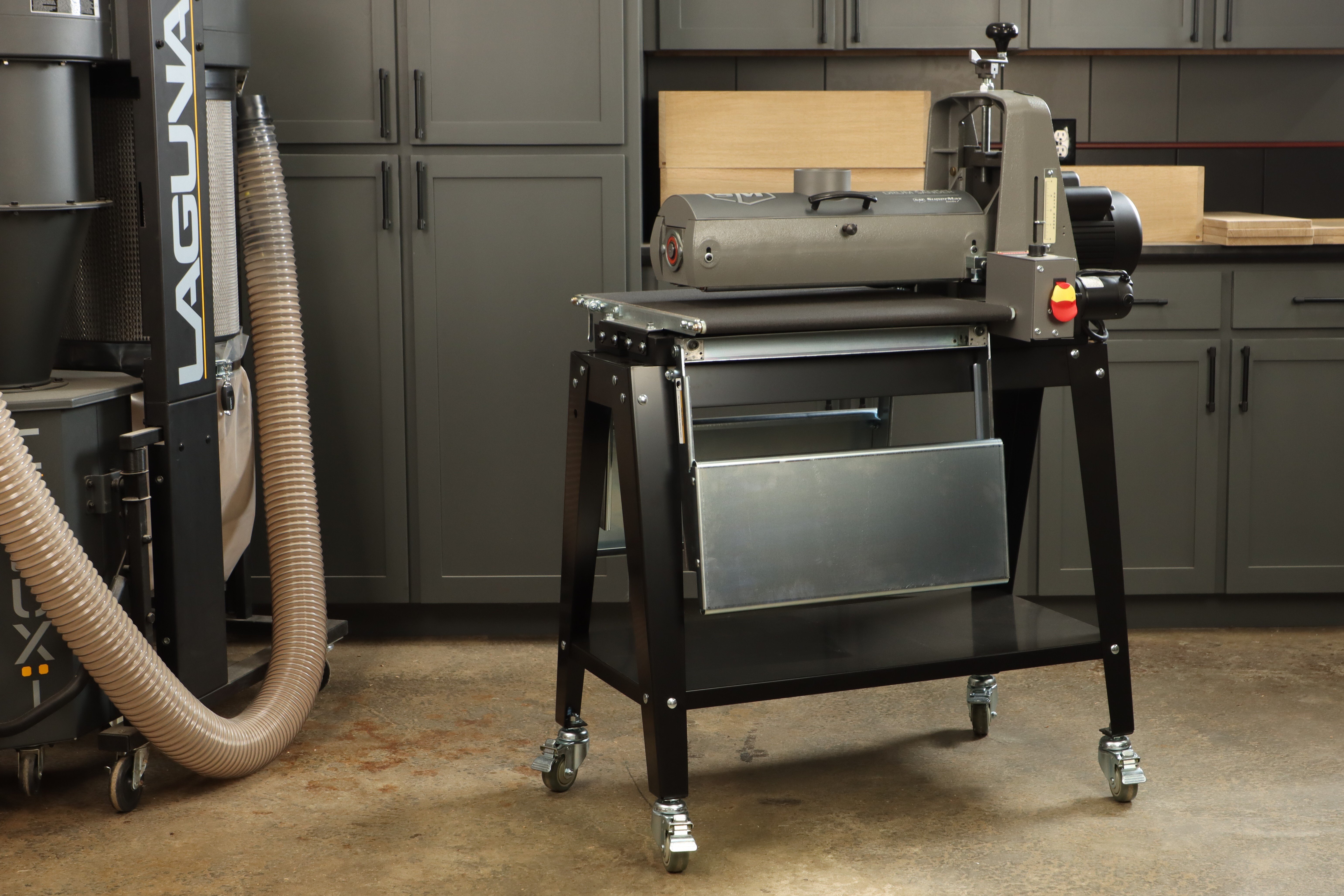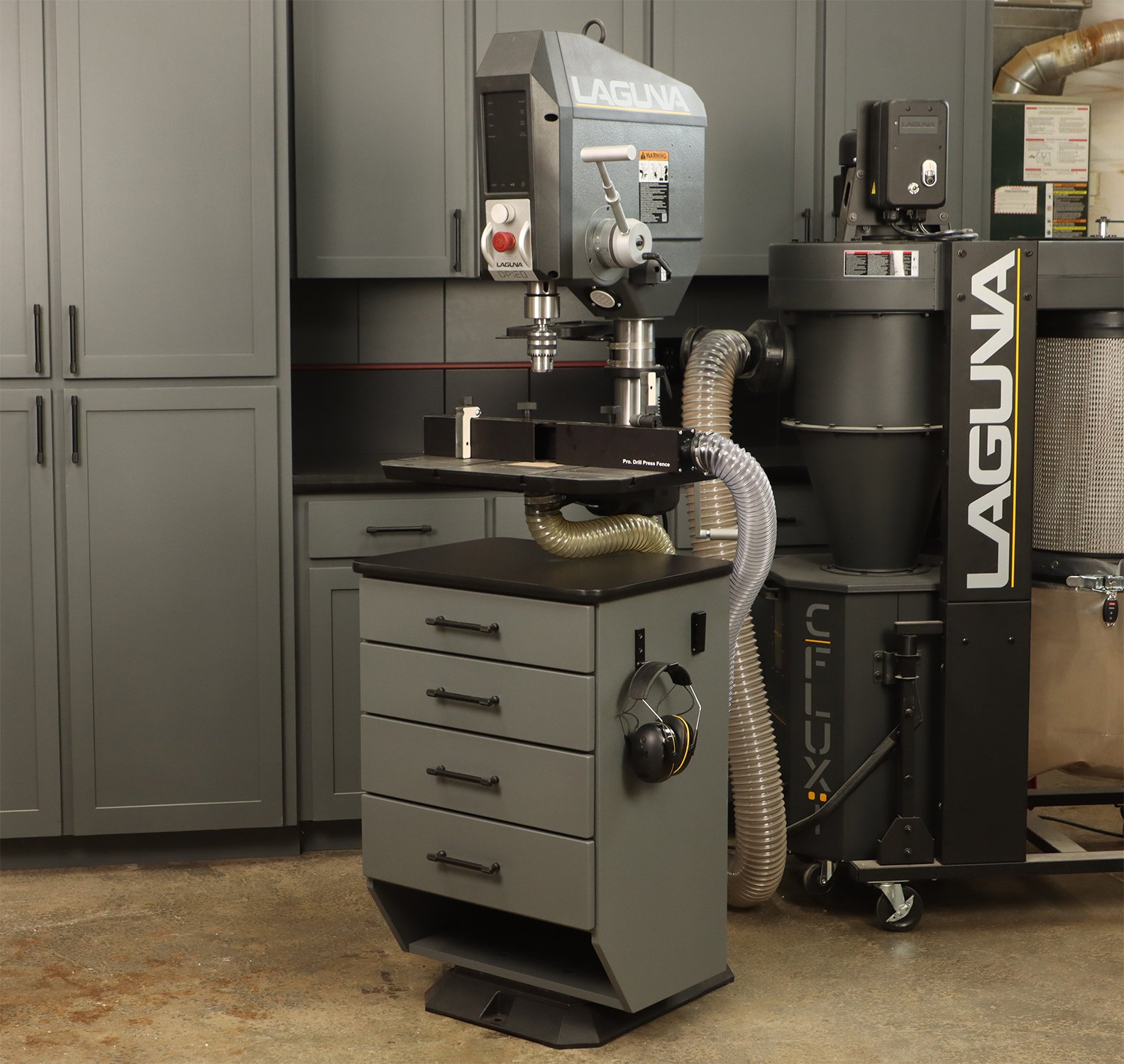One of the advantages of having a full compliment of woodworking tools is the ability to handle rough sawn lumber. If you’re a serious woodworker, it’s worth investing in a good quality jointer and planer. This will allow you to buy less expensive rough sawn or “skip planed” lumber, and save a substantial amount on each project, compared to fully surfaced S4S lumber.

I buy rough sawn lumber right from the sawyer, and tend to buy it by the pickup load rather than by the board foot. Finish milled lumber from specialty woodworking stores is quite expensive for common domestic species like oak, maple and walnut, and the price increases further for exotic imported lumber like jatoba, zebrawood, wenge or mahogany. However, if you have the right tools and don’t mind putting in a little sweat-equity, the savings when working with rough sawn lumber can be dramatic.

A precision jointer is the first tool that will allow you to handle rough sawn lumber. It’s one of the few tools in the shop that can create a perfectly flat reference surface. Once you have a flat reference surface, you’ll make an adjacent surface of the board perfectly square. These first two milling steps form the basis for every other operation in building your project. If you don’t start with straight, square workpieces, there’s not much hope that the finished project will meet your high expectations.

But, there are a few key techniques to keep in mind as you fire up that new jointer. As you select rough stock to mill for a particular project, sight down the board to see which side is concave. Always place the concave side of a board down on the jointer table. This will give the board two solid points of contact as you pass it over the cutterhead. If you accidentally place the convex side down, the board could rock back and forth as you pass it over the jointer. The net result is a board that isn’t properly flattened.

Push Paddles beat Push Sticks. When using a jointer, I’ll select large push paddles whenever the job allows it. They offer plenty of grip to control the lumber, and help keep your hands well clear of the cutterhead. After all the boards from a milling run are flattened on one face, readjust the jointer fence for the second cut. When squaring the second edge, try to expose as little of the cutterhead as possible for safety.
Bonus Tip: Shorten boards to rough dimension before taking them to the jointer. It’s much easier to joint a 3-foot board than an 8-foot board. Besides, most boards used to build furniture are fairly short anyway. Plus, you’ll maximize board thickness and minimize waste by shortening boards first.

Once your stock is flat on one face, break out the big guns. A heavy-duty planer makes quick work of milling all your boards to correct thickness. Place the flat, reference surface against the cast iron table of the planer, and send it through. What emerges from the outfeed side is a flat, smooth board without a trace of tearout. This is especially true if you have a planer with a helical head. My advice is to get the widest planer you can afford. More width equals more capacity, and the ability to handle wide panels in the shop.

When planing stacks of lumber to finish dimension, try to mill all boards of like thickness at the same time. Here, a stack of 8/4 white oak was milled to a finish thickness of 1-3/4” on the first run. The second stack was milled to a finished thickness of 1”. More and more tools are coming standard with digital gauges such as a Wixey DRO, which allows absolute precision in your work. It’s just another way improved tools are helping woodworkers achieve great results.
Explore Laguna’s comprehensive line of JX series jointers https://lagunatools.com/classic/jointers/
Or pick the right PX series planer for you https://lagunatools.com/classic/planers/
Willie Sandry is a Freelance Writer for several woodworking magazines, blogger, crafter in wood and leather, and YouTube Creator.
Find useful tips and tricks on Willie’s channel The Thoughtful Woodworker https://www.youtube.com/c/TheThoughtfulWoodworker




